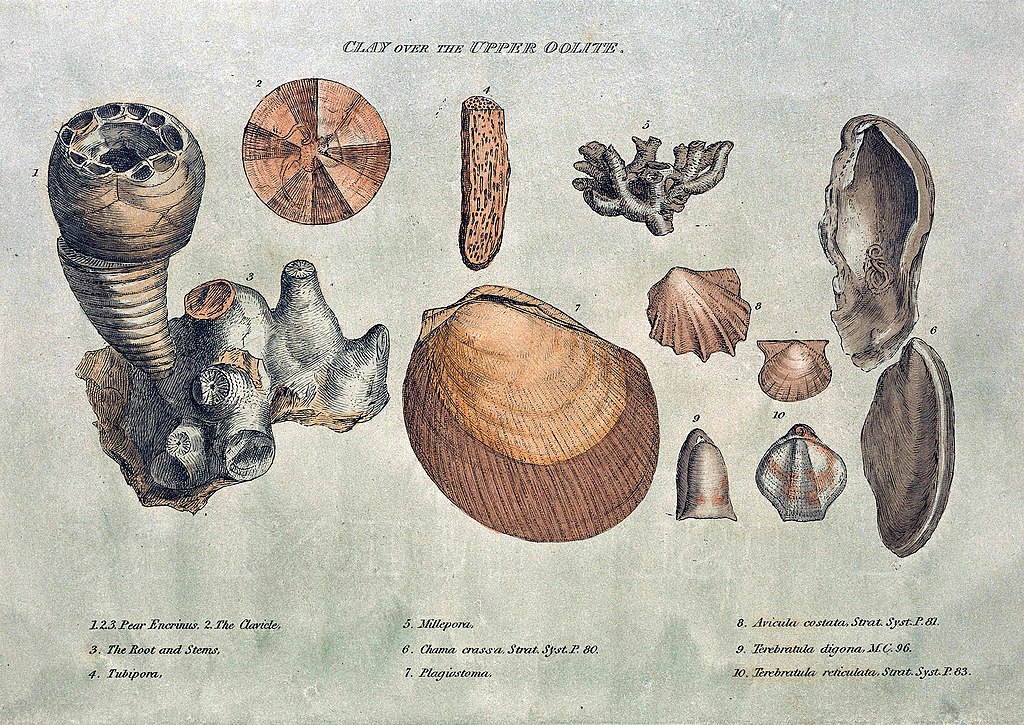Smith fossils2
Författare/Upphovsman:
William Smith (1769–1839)
Kreditera:
Plate 3 in: Strata identified by organized fossils, containing prints on colored paper of the most characteristic specimens in each stratum. Part 4 (1819). W. Arding, London, doi:10.5962/bhl.title.106808.
Kort länk:
Källa:
Upplösning:
1977 x 1400 Pixel (3291234 Bytes)
Beskrivning:
Historical plate showing fossils that characterize the “Clay over the Upper Oolite” of England (more widely known as the Bradford clay, a clayey layer on top of a hardground which forms the basal surface of the Forest Marble Formation in the area of Bradford-on-Avon and is Bathonian, i.e. Middle Jurassic, in age[1]). This plate comes from the fundamental biostratigraphical work of the pioneer of modern geology William Smith. Note that the names of the fossil taxa may have changed since, mainly in a way, that contemporary genus concepts subsequently changed over to family or even higher-ranked taxa. For some of the figured specimens, e.g. for the “Pear Encrinus” in figs. 1–3, there even were no formally described genera or species at the time. This taxon was first mentioned under a linnean binomen only in 1820 by Schlotheim (Encrinites parkinsonii)[2] and was 1821 referred to as Apiocrinites rotundatus by Miller[3]. Because Apiocrinites rotundatus is thus a junior synonym of Encrinites parkinsonii with Encrinites being an in fact meaningless genus from the earliest days of fossil crinoid systematics, the taxon today is referred to as Apiocrinites parkinsoni.[1]
Licens:
Public domain
Mer information om licensen för bilden finns här. Senaste uppdateringen: Mon, 08 Jan 2024 12:47:12 GMT
